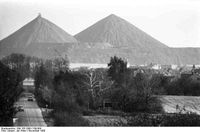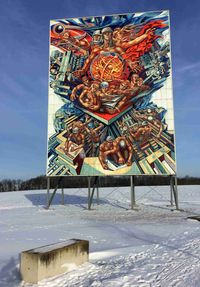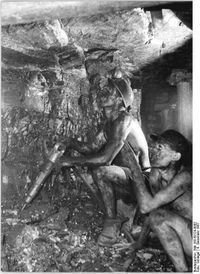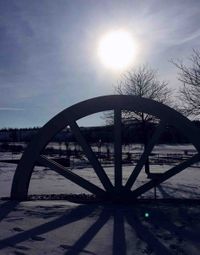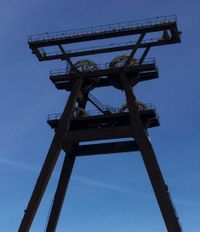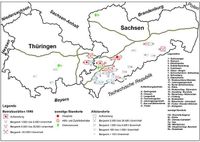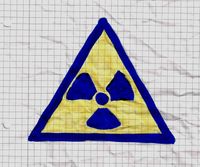Uranium. Mining. Wismut. GDR.
Restoring a Lunar Landscape
Now UNESCO World Heritage Ore Mountains mining region
Overcoming one of East Germany’s Greatest Sins Against the Environment: Uranium Mining
During the Cold War, one particular region of Germany proved useful for the
construction of nuclear weapons. After World War II ended, the Soviets found large
uranium deposits in southern East Germany. These deposits were, without regard for
the people living in the region or its environment, voraciously exploited. This led to
the founding of Europe’s largest uranium mining corporation, the Wismut AG. Entire
cities and towns were forced to give way mining efforts. Enormous waste dumps,
which from afar looked like large cones, towered above the landscape. No reports
about the resulting damage to the environment were allowed to be published. That
many miners faced an early death at the hands of cancer was an open secret.
Mining efforts were ended with German reunification. The environmental damage
was visible everywhere: decommissioned mines, dirty waste dumps, leaky tailings
ponds, dilapidated industrial facilities, all of which needed to be secured and returned
to their natural states. Such poisons as arsenic, mercury, and lead as well as constant
nuclear radiation needed to be dealt with. To this end, an unprecedented project was
put in motion. The waste dumps were removed, their contents returned to the mines,
tailings ponds were drained and covered, and industrial facilities torn down and
disposed of. The idea was never to return the environment to its previous, undisturbed
state. The damage was simply too great for that. Instead, the purpose of these
measures was to control the strain placed on the environment, and keep it as low as
possible for generations to come. The ultimate goal is to provide the residents of
affected areas a safe and appealing place to live, despite the damage done in the past.
Content:
1. Pedagogy and didactics of Environmental Educations.
2. History of uranium mining and the SDAG Wismut in the Erzgebirge and Thuringia regions
2.1 Uranium mining’s environmental damage and danger to nature
2.2 Elimination of dangers to the environment
2.3 Restoration and reclamation of mining regions
2.4 Repurposing mining areas
2.5 History as an opportunity
3. Transfer of knowledge and skills to your own school situation, target group and conditions on-site.
Outcomes: Participants know the history of uranium mining in East Germany.
Participants learn about dangers of uranium mining and subsequent environmental damage.
Participants are familiar with methods of restoring and reclaiming environments and eliminating damage to nature, as well as the future use of previously harmed areas.
Participants reflect on the use of this knowledge for their classrooms.
Participants reflect on their own attitude towards environmental protection and education.
Target audience: Teachers of the following subjects: science, geography, politics, and ethics at general education institutions of secondary levels I and II, as well as vocational schools.
Date:
28.05.-01.06.25: five days (book now)
02.10.-06.10.25: five days (book now)
19.11.-23.11.25: five days (book now)
13.05.-17.05.25: five days (book now)
Number of participants:
4-12 persons
Language: English
(English level: listening: B1 - B2)
Cost:
Course fee: 400 €
Administration fee: 50 €
Places: Zwickau and surroundings
UNESCO World Heritage Ore Mountains mining region
Lodging: The seminar is happy to reserve accommodation
Did we spark your interest? Pre-register you now!
Pictures of this web page: Head No. 3: Bergarbeiter, Arbeitspause: Von Bundesarchiv, Bild 183-50124-0001 / CC-BY-SA 3.0, CC BY-SA 3.0 de, https://commons.wikimedia.org/w/index.php?curid=5354386 // Abraumhalden: Von Bundesarchiv, Bild 183-1990-1109-004 / Jan Peter Kasper / CC-BY-SA 3.0, CC BY-SA 3.0 de, https://commons.wikimedia.org/w/index.php?curid=5348145 // Bergarbeiter helfen im Martin Hoop Schacht: Von Bundesarchiv, Bild 183-50124-0002 / CC-BY-SA 3.0, CC BY-SA 3.0 de, https://commons.wikimedia.org/w/index.php?curid=5354387 // Karte: Von Geomartin - Eigenes Werk, CC BY-SA 3.0, https://commons.wikimedia.org/w/index.php?curid=5578245 // Others: S. Behnken
